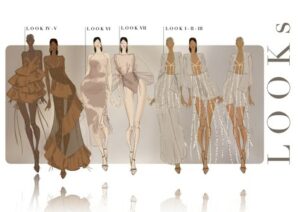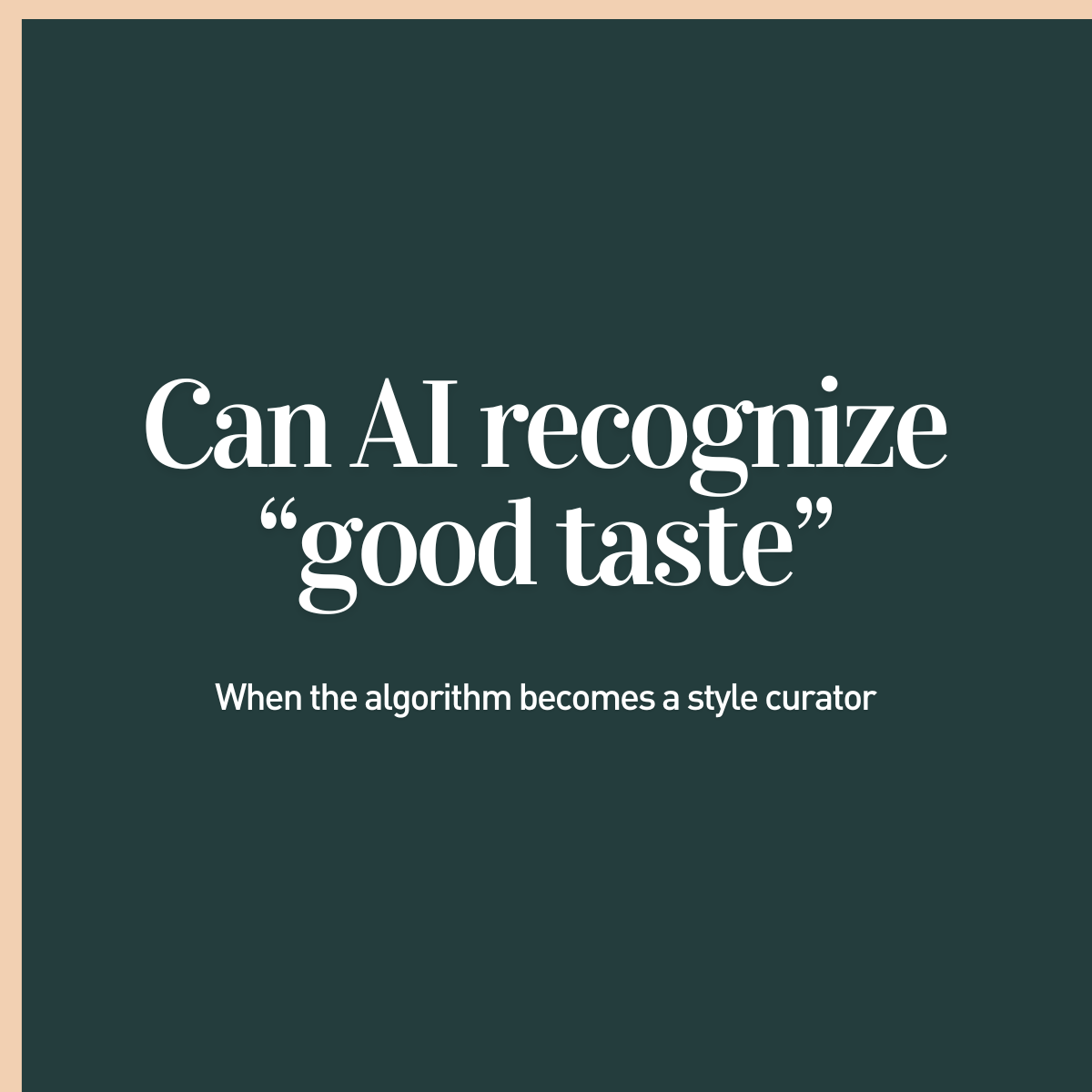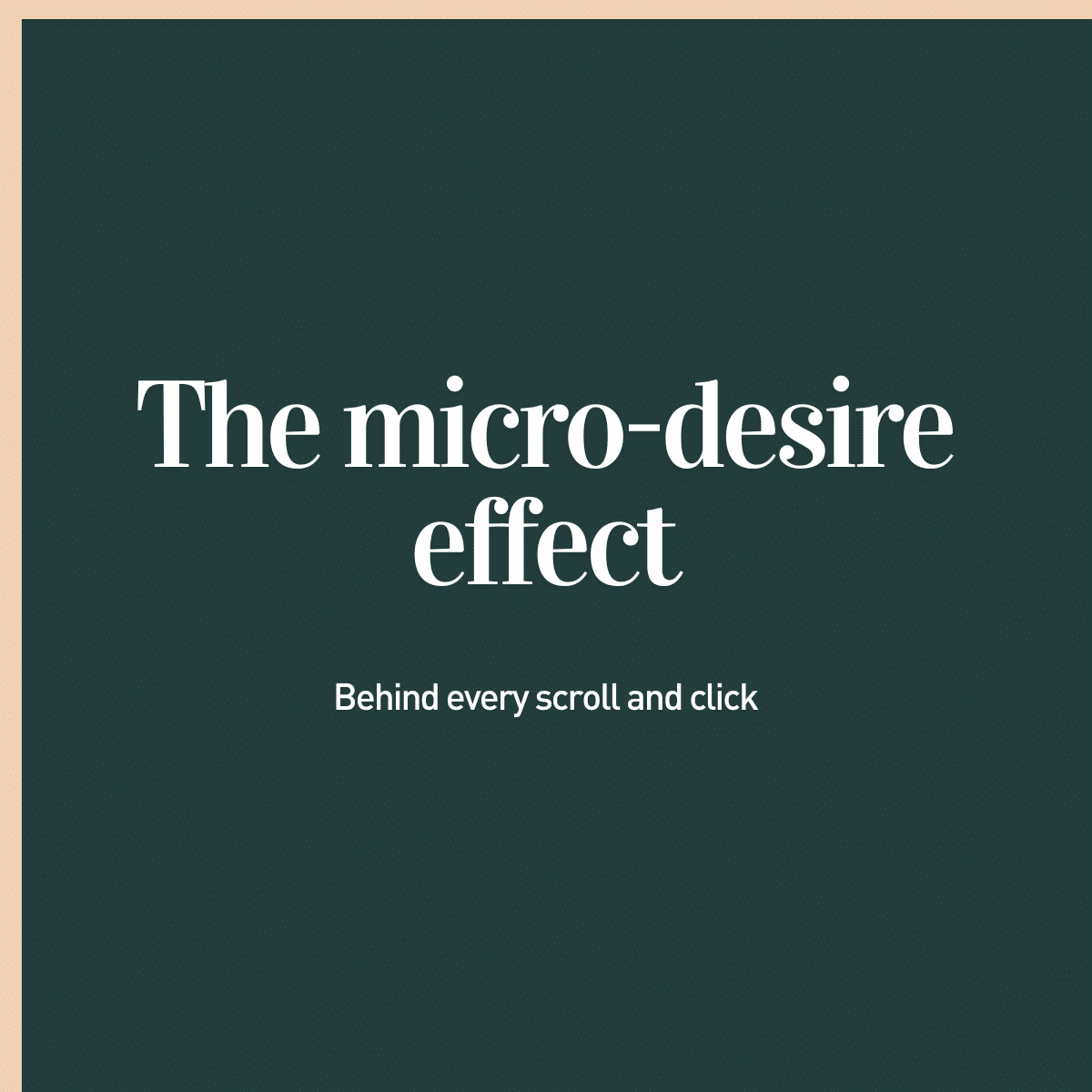Can AI recognize “good taste”? When the algorithm becomes a style curator
In a world where trends are shaped as much by a TikTok feed as by a Paris runway, one question stands out: can we still talk about taste when algorithms are the ones sorting, ranking, recommending and sometimes even creating?
As artificial intelligence weaves its way into fashion from product design to customer experience, it’s also becoming a silent curator. It analyzes, predicts, suggests. It influences.
But is it truly capable of spotting what we call “good taste”? The kind that can’t be measured in likes, but in nuance.
AI, the new style authority?
Today, platforms like Heuritech or Fashable scan millions of social media images to detect what are known as “weak signals” , those recurring visual cues that, once analyzed at scale, help anticipate upcoming trends. A shade spotted across multiple posts, a neckline appearing on several silhouettes, a cut detail gaining traction everything becomes a data point for prediction.
Some fashion houses are going even further. Balenciaga has already experimented with generating content from its archives using AI. Gucci, Valentino, and Lacoste have entrusted certain campaigns to generative image algorithms, incorporating visuals created by AI directly into their communications. Meanwhile, studios like Maison Meta now design collections imagined by AI and then produce them “in real life,” blurring the line between simulation and production.
With these tools, a brand can predict that cherry red, pearls, or bows are likely to go viral within six months. In other words, data doesn’t just confirm creative intuition, it’s becoming a strategic compass. What was once guided by instinct or a creative director’s eye is now being shaped, at least in part, by artificial intelligence.
AI is no longer just a technical assistant. It’s beginning to take an active role in creative direction, slowly establishing itself as a new kind of tastemaker.
A taste that pleases… or performs?
This is where things get interesting. What AI identifies as “good” is, by design, what works: what gets shared, liked, bought, adopted. Drawing on massive volumes of behavioral data, the algorithm doesn’t judge a silhouette for its originality or precision, it evaluates it based on measurable reactions: likes, comments, shares, clicks, sales. It replicates what has already performed well, what people have already responded to. And in doing so, it keeps feeding a dominant aesthetic, optimized to please.
So we end up seeing the same cuts, the same color palettes, the same “inspo” visuals, everywhere. Feeds start to look alike. Campaigns align. Uniqueness can get lost in the name of visual performance.
But that’s not a bug it’s how today’s AI is built. It isn’t designed to challenge, but to reinforce. Not to detect a creative spark, but to validate a trend that’s already taking shape.
Because “good taste,” if it exists, isn’t a statistical average. It can be unexpected, slow to catch on, and even off-putting at first. It’s shaped by culture, context, and intuition all things AI, by nature, doesn’t feel. And yet, it’s often in that uncomfortable space where things haven’t yet “worked” that something truly new begins.
The temptation of creative automation
On the creative side, tools like Midjourney, DALL·E, or Stable Diffusion have completely shifted the game. In a matter of seconds, a designer can generate twenty versions of a “cobalt blue oversized coat inspired by Margiela, in digitized tweed” no sketching, no prototyping, just a well-written prompt. It’s fast, impressive, and dangerously addictive.
Because while these AIs are incredible for sparking ideas or expanding a visual universe, they can also create the illusion of novelty when in reality, it’s just reassembly.
AI pulls from existing databases, digests visual codes… without always grasping their cultural or emotional weight. The result? Visually appealing, polished, and effective outputs but often interchangeable.
As Paul Mouginot, cofounder of the studio Aurèce Vettier, puts it: “AI doesn’t create its digests.” And what it produces, however aesthetic it may seem, is always a remix of what’s already been done.
The risk is clear: visual creation becomes increasingly uniform, especially if AI becomes the default across studios and fashion houses. The more it’s used, the more it repeats what it already knows. Surprise fades. Creativity turns automatic. And unpredictability slowly disappears.
Can AI be taught good taste?
Theoretically, yes. One could train an AI to recognize “good taste” by feeding it exclusively with archives of iconic designers, legendary pieces, silhouettes validated by fashion history or praised by critics. It could be exposed to runway shows, editorials, museum images. The algorithm would then establish connections between cuts, proportions, recurring associations, and aesthetic references like a sort of “good taste library.”
But even then, this would be a taste shaped by fixed, often Western and elitist benchmarks. Who decides which designers to include, which pieces to exclude, which reviews to prioritize? Taste is never neutral. It is social, cultural, political. What is deemed “elegant” or “refined” at a given time can be deeply biased by the norms of an era or a social group.
Teaching taste to an AI means inevitably transmitting a specific worldview. The risk is that it turns that view into an unshakable truth, a rulebook without nuance where one perspective becomes the standard, and a sensitivity becomes a fixed norm.
And what about human creativity?
Designers responses to AI remain nuanced. Many see it as a valuable tool, a way to prototype faster, visualize intent, and explore shapes without needing sketches or moodboards. In this sense, AI becomes a technical partner, an extension of the imagination.
But for others, it raises concern, not because of the technology itself, but because it threatens a fundamental space: that of intuition, spontaneity, the unpredictable. Elements that can’t be coded but are central to the creative process.
In fashion especially, creation relies on much more than data or visual references. It often emerges from instinctive gestures, choices that defy explanation. It’s a dialogue between material, body, and gaze a conversation that AI simply can’t perceive.
It may identify a shape that works, a volume that pleases, a color that trends.
But it doesn’t feel what a garment evokes when worn. It doesn’t grasp the weight of a fabric, the tension of a seam on a moving body. It can’t read the meaning behind a fold, a stitch, or a deliberate absence.
As Julien Rosilio, founder of DressX, puts it: “AI can assist, but it will never replace human artistic sensitivity.”
And that might be its true role one tool among many, in service of an idea, but never leading it.








Leave a comment: